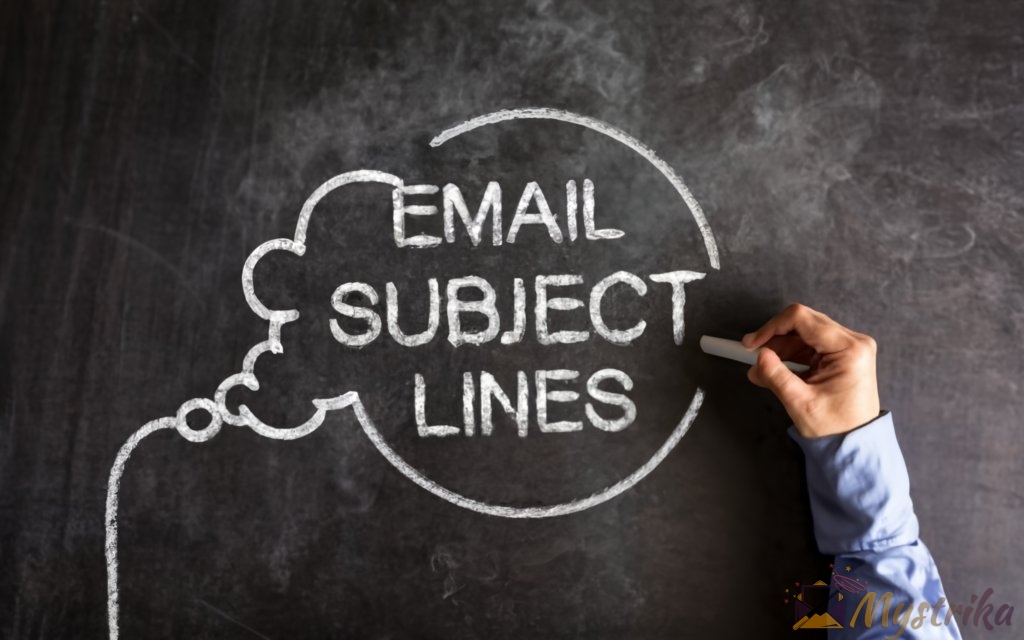Sun’s out, open rates up! Summer’s both busy and distracting for subscribers. Cut through the noise and grab attention with these proven tips for refreshingly compelling summer email subjects.
Why Summer Emails Need Catchy Subject Lines
Summer might seem like a sleepy season, with people lounging at the beach or napping in hammocks. But for email marketers, it’s anything but! Summertime inboxes get more crowded than ever.
To stand out, you need attention-grabbing subject lines that break through the noise. Here are three reasons why catchy summer email subjects are essential:
Getting Attention in Crowded Inboxes
Let’s face it – everyone wants a piece of your subscriber’s inbox. From daily deals to vacation reminders, summer sees a surge of promotional emails. With so many messages flooding inboxes, you need to catch your audience’s eye fast.
Creative subject lines pique curiosity and compel readers to open. For instance, “30 beach reads under $10” sparks interest better than a generic line like “Summer eBook Sale.”
Subjects with urgency also work. “24 hours left for 50% off!” conveys a fleeting chance to grab deals. stat that time-limited subject lines have a 70% higher open rate.
Finally, leveraging seasonality reminds people of summer activities they love. “Refreshing ranch water cocktail recipes” evokes carefree vibes better than non-seasonal topics.
Overcoming the Vacation Mindset of Recipients
During summer, people are often in vacation mode. Their minds drift to tropical getaways, not emails. That’s why an engaging subject line is crucial for breaking through daydreams of palm trees and beach bars.
One effective technique is tapping into FOMO – the fear of missing out. “Final call for summer essentials!” piques curiosity about limited-time offers.
Another approach is using humor or puns like “A sale so nice, you gotta buy it thrice.” Silly wordplay offers a fun distraction from the heat.
References to summer fun also work. A camping retailer could try “S’mores, snores, and outdoor deals!” Linking discounts to campfire favorites catches attention.
Standing Out with Seasonal Relevance
Email overload means readers only fully process emails that seem worthwhile. So seasonal relevance in the subject boosts that perception of value.
For example, “Red, white and BOOM! 4th of July sale” ties deals to a major summer holiday. Its specificity promises useful, time-limited content.
Meanwhile, a general line like “Summer deals at Brand.com” seems vague and forgettable. Without seasonal details, it risks getting lost in the fray.
Brands like J.Crew lean into seasonality with subjects like “Sunny weekends ahead! Extra 50% off sale styles.” The summery phrasing makes their promotion shine.
Even businesses less tied to summer can benefit from seasonal nuances. A bookkeeper could try “Organize summer receipts with 25% off QuickBooks.” Tailoring subject lines to the season makes them more clickable.
With a bit of creativity, any business can take advantage of summer themes and stand out in crowded inboxes. The right subject line invites readers to engage instead of hitting delete. So take time to brainstorm seasonal hooks and irresistible wording to captivate your audience. Summer’s fleeting weeks will fly by before you know it!
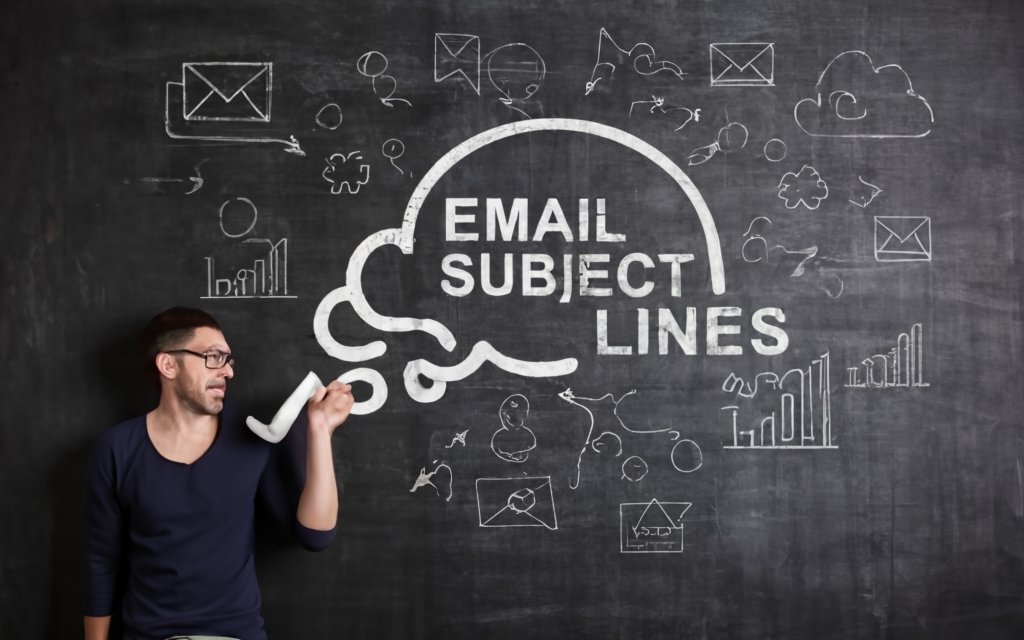
Summer Email Subject Line Dos and Don’ts
Crafting compelling subject lines is both art and science. While creativity counts, you also need to know key best practices that engage recipients. Follow these summer email subject line dos and don’ts, and you’ll be on your way to higher open and click-through rates.
Keep it Short and Scannable
Inboxes are crowded, and attention spans are short. That’s why concise, scannable subject lines work best for summer campaigns.
Do:
- Limit subject length to 30-50 characters
- Front-load key information
- Use fragmented phrases instead of full sentences
For example, “Sunny deals end today!” packs a punch at just 16 characters. The time limit creates urgency while promising summer appeal.
Don’t:
- Ramble on with lengthy subjects
- Bury your hook under wordy introductions
- Use convoluted language
Avoid subjects like “We’re overstocked for summer and passing the beach-ready savings to you!” At 51 characters, it’s easy to lose the lead. The core message gets drowned out.
Use Seasonal Keywords and Emotional Triggers
Summer-themed keywords catch the eye, especially when combined with emotional triggers related to the season.
Do:
- Use summery words like sun, heat, August, and phrases like beach vacation or summer road trip.
- Tap into emotional triggers like adventure, relaxation, freedom or nostalgia.
- Leverage seasonal events and holidays like Fourth of July, Memorial Day, back to school.
For example, “Your summer road trip essentials are here” combines seasonal keywords with emotional concepts. Meanwhile, “Red, white and boom! Fourth of July sale” taps into a specific holiday.
Don’t:
- Stick to dry, generic phrases that could apply to any season.
- Neglect including any seasonal details or emotional hooks.
“30% off everything” lacks creativity and summer specificity. Without an element of seasonality, it’s likely to blend into the inbox noise.
Avoid Spammy Words That May Get Filtered
Some words are red flags for spam filters, especially if overused. Stay away from risky language to keep your email out of the promotions tab or spam folder.
Do:
- Review your subject lines for frequently filtered words like “free,” “sale,” “discount,” “money,” etc.
- Use them sparingly and avoid grouping them together.
Don’t:
- Lean too heavily on problematic keywords most associated with spam.
- Downplay your subject line’s value proposition just to avoid filters.
“Free money now!” would likely get snagged immediately. But a subject reading “An exclusive summer gift inside” still conveys added value without the warnings signs.
Personalize When Possible
The recipient’s name adds a special touch, as do details about their purchase history or interests. Segmenting your list allows personalization at scale.
Do:
- Address people directly by their first name when possible.
- Reference past purchases or browsed items.
- Tailor subject lines by buyer persona or purchase history.
For example, “Jessica, don’t miss this one-day flash sale!” feels more 1:1 than a generic subject. Just take care not to get too familiar.
Don’t:
- Use overly casual language like “Hey girl!” which may seem unprofessional.
- Make assumptions about preferences based on stereotypes. Keep personal details specific to the individual.
Experiment with Emojis in Moderation
A summer emoji or two can infuse seasonal cheer into subject lines. But use them strategically so they don’t appear unprofessional.
Do:
- Limit emojis to 1-2 per subject maximum.
- Choose relevant seasonal emojis like ☀️, 🏖, ⛱, 🍦.
- Test emoji placement to see if front, middle or end drives more clicks.
For example, “It’s sundress season! ☀️ 25% off all dresses” uses a sun emoji to accentuate summer appeal.
Don’t:
- Overload subjects with hard-to-decode emoji strings.
- Use emojis that seem childish or unaligned with your brand voice.
- Neglect testing to see if emojis lift or depress your open rates.
Summer Subject Line Ideas for Promotions
Summer promotions let you clear old inventory and generate revenue during slower months. Catch more opens for your summer sales and deals with these seasonal subject line examples:
- 30% off for a limited time only!
- Flash sale this weekend: 50% off summer styles
- Final call! Our summer sale ends tomorrow
Urgency and scarcity prompts get attention fast. Phrases like “limited time only” and “ends tomorrow” convey exclusivity. Stats show time-limited offers have a 70% higher open rate.
Deep discounts also get noticed. “50% off summer styles” promises big savings off in-season merchandise. Make the discount specific to summer items for maximum appeal.
And words like “flash sale” and “final call” build excitement by suggesting a fleeting chance. These high-momentum subjects inspire action.
Subjects for New Summer Collection
Announcing new seasonal arrivals in your subject line can also attract interest from subscribers. Here are engaging ways to highlight fresh summer products:
- Sneak peek: Our summer collection has arrived!
- The summer trends you need are finally here
- Your new favorite summer styles inside!
Lead with “sneak peek” or “new arrival” to convey exclusivity, as if unveiling products before the public launch. This makes subscribers feel like VIPs getting early access.
Spotlight the summer angle upfront for relevance. Phrases like “summer collection” and “summer trends” promise seasonal appeal.
End with specific teasers like “new favorite summer styles” to create anticipation. Give just enough detail to pique curiosity without giving away too much.
End of Season Summer Email Subjects
The end of summer is a prime time to convert final sales as shoppers realize summer is coming to a close. Urgency is important in these closeout subject lines:
- Last chance for 50% off summer deals
- Summer’s almost over – shop these final markdowns
- Hurry! Final days of our summer sale
Reminding shoppers of summer’s imminent end prompts purchases while inventory and sizes remain available. Phrases like “last chance” and “final days” impart scarcity.
Big percentage discounts also help, signalling deep savings on closing summer products. Make the seasonal angle clear with wording like “summer deals” and “summer sale.”
And urgent cues such as “almost over” and “hurry” add pressure to buy before the clock runs out on summer deals. This fear of missing out (FOMO) strategy wins last-minute conversions.
Subject Line Ideas for Summer Holidays and Events
Tying your subject line to major summer happenings makes your content more relevant for the moment. Tap into these upcoming summer holidays and events:
Fourth of July Subject Lines
The July 4th holiday presents patriotic summer savings opportunities. Some 4th of July email subject line ideas include:
- Let freedom ring! 30% off red, white & blue styles
- Spark savings this Fourth! 25% off everything
- Independence Day deals are here!
Use holiday shorthand like “Fourth of July” or just “Fourth” to reference the occasion. Merging patriotic colors and savings conveys summer spirit.
Keywords like freedom, spark, and independence link discounts to the holiday’s values. This helps avoid overly commercialized language around July 4th.
And make sure to highlight the deal or percent-off clearly. Saving money and celebrating freedom go hand-in-hand!
Back to School Subject Lines
Late summer is back to school season, making it smart to theme emails around the new school year:
- Get ready for school with 20% off supplies
- New year, new gear! 30% off backpacks & lunchboxes
- School’s out! Time for back to school deals
Mentions of “school,” “new year,” and “back to school” put the seasonal concept front and center. This taps into parents’ need to purchase supplies.
Spotlight school-related categories like backpacks, lunchboxes, dorm furnishings, and laptops. Listing specifics piques interest from deal seekers.
And timing is key. Running back to school offers right as summer breaks ends accommodates last-minute shoppers.
Summer Subject Line A/B Testing Tips
Take the guesswork out of summer subject line creation by A/B testing different variables. Try these experiments:
Test Call-to-Action Phrases
Does urgency like “24 hrs only!” outperform exclusivity such as “VIPs only” for your audience? Try subject lines that use:
- Limited-time words: last chance, ends soon, flash sale
- Exclusive words: VIP, insider, reserved
- Discount words: extra 30% off, promo code inside
See if any phrasing consistently lifts open and click-through rates higher over a two-week period when compared to a control subject.
Try Different Seasonal Keywords
Does “summer” get more traction than “July” or other seasonal words? Test a variety of keywords head-to-head:
- General summer words: summer, sunny, heat wave
- Month-specific words: July, August, fall
- Event words: July 4, Memorial Day, back to school
You may uncover surprising results, like subscribers responding better to “fall” than “summer” savings toward August.
Experiment with Punctuation and Symbols
Icons, punctuation, brackets, and symbols can all impact email open rates. Test the effects of:
- Emojis: ☀️😎🏖️🌴 vs no emoji
- Brackets: [Limited supply!] vs no brackets
- Symbols: 50% off vs 50% off
- Caps: DON’T MISS OUT vs Don’t Miss Out
Track open rate lift for these styling variables. However, be wary of overusing gimmicks if they don’t align with your brand voice.
Tools to Improve Summer Email Deliverability
Seasonal spikes in email volume can hurt inbox placement. Use these tools to maximize deliverability:
Warm Up New Subject Lines Before Sending
Send a small batch first to seed new subject lines before larger sends. This helps your ESP gauge engagement and spam risk.
Analyze Email Analytics to ID High-Performing Subjects
Review historical summer campaign data to spot your most effective keywords, hooks, and templates. Replicate what succeeds.
Ensure Mobile Optimization for Subject Lines
Preview how subject lines display on mobile before sending. Adjust length and style for small screens.
Subject Line Best Practices For Any Season
Beyond summer-specific techniques, some basic guidelines create great subject lines all year round:
Limit Subject Length for Mobile Devices
Keep subjects under 50 characters and 30-40 is ideal. Lengthy sentences get cut off on small screens.
Speak to Customer Needs and Interests
Align topics with your audience’s values, concerns, and preferences for relevance.
Ensure Clarity and Accuracy
Avoid vague claims or hyperbole that may mislead. Keep subjects clear and honest.
Use Personalization When Possible
Name, past purchase, or custom segment details add a personalized touch if applicable.
Ready to Boost Opens with Seasonal Subjects?
Summer’s sun-filled days lend an upbeat atmosphere to promotional messaging. Avoid inbox blindness by incorporating seasonal keywords, emotions, and events into creative subject lines. Keep critical dos and don’ts in mind, while letting your imagination run wild. Lastly, test different variables and analyze past performance data to perfect your email subject line approach.
With engaging summer subjects that catch the eye, your emails are sure to be a bright spot in subscribers’ inboxes. So soak up the inspiration from these summer email subject line examples and refresh your seasonal campaigns.
Want more guidance? Download our free Summer Email Subject Line Templates to get proven, highly clickable subjects tailored to all your summer campaigns. Simply click below to access the templates.
[CTA button to download subject line templates]
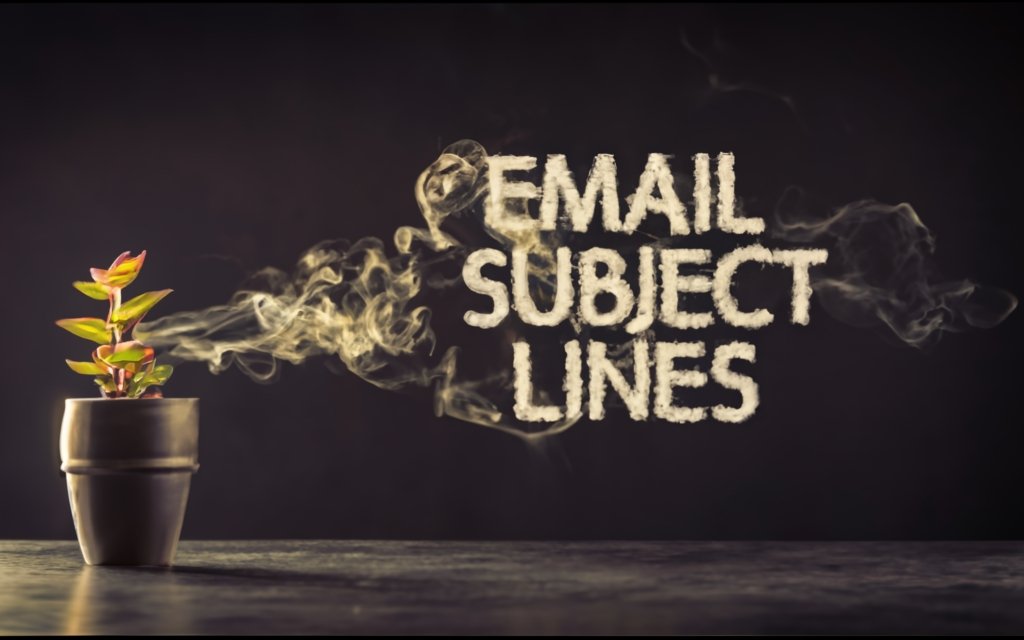
Subject Line Ideas for Summer Holidays and Events
Major summer holidays present fun opportunities for seasonal savings. Tie your subject line to upcoming summer celebrations and events to create relevance.
Fourth of July Subject Lines
Independence Day lands right in peak summer, offering chances to merge patriotic and promotional messaging.
Some creative ways to highlight Fourth of July savings in your subject line:
- Let freedom ring! 30% off red, white & blue styles
- Spark savings this Fourth! 25% off everything
- Independence Day deals are here!
The first subject line ties discounts to a patriotic color scheme, calling out savings on red, white and blue products. This builds seasonal excitement while showcasing deals.
Using shorthand like “Fourth” or “4th of July” keeps the subject scannable while alluding to the holiday. Keywords like freedom, spark, and independence also reinforce the occasion’s symbolic meaning.
Make sure to call out the percent-off or specific deal clearly too. Saving money and celebrating freedom go hand in hand!
Other July 4th subject line tips:
- Limit to 30-45 characters for brevity
- Incorporate words like freedom, star-spangled, fireworks, July 4, and Independence Day
- Spotlight summer savings like 25% off or $10 off summer styles
- Add urgency with “24 hrs only!” or exclusivity like “VIP Members only”
- Try brackets or emojis like [🇺🇸 July 4 Sale! 🎆]
With some patriotic flair and seasonal savings emphasis, your Fourth of July subject lines will inspire festive openings.
Back to School Subject Lines
Back to school shopping picks up in late summer, making it an opportune sales theme. Parents have school supplies, clothes, and dorm furnishings on the brain.
Some back to school subject line examples:
- Get ready for school with 20% off supplies
- New year, new gear! 30% off backpacks & lunchboxes
- School’s out! Time for back to school deals
Mentions of “school,” “new year,” or “back to school” instantly give the subject seasonal relevance. Calling out related categories like backpacks and supplies appeals directly to parents’ needs.
Timing these subject lines toward summer’s end targets shoppers before the school rush. Highlight school-themed discounts to attract deal-seeking parents.
Other back to school subject tips:
- List specific supplies like notebooks, pencils, binders to catch parents’ eyes
- Use keywords like new year, first day, back to school, new clothes, school supply
- Tie into major sales like Black Friday in July or end of season clearance
- Add urgency like “sale ends Sunday!” to prompt purchases
Summer’s last stretch is prime back to school season. Maximize this sales opportunity by aligning subjects with parents’ late summer purchasing needs.
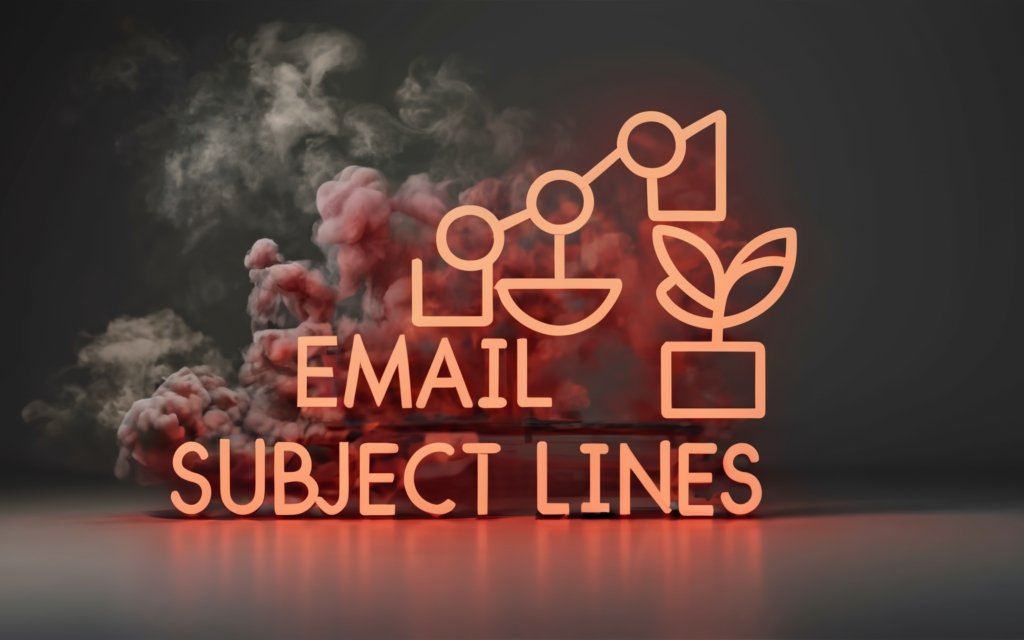
Summer Subject Line A/B Testing Tips
Crafting winning summer email subjects doesn’t have to be a guessing game. A/B testing allows you to experiment with different variables and pinpoint exactly what makes recipients open.
Here are some key elements to test for higher summer open rates:
Test Call-to-Action Phrases
Your call-to-action often makes or breaks subject click-appeal. Test urgency versus exclusivity wording:
- Urgent words: 24hrs only!, today only, ends soon, act now
- Exclusive words: VIP sale, insider deals, reserved for you
For example, send one campaign with “VIP Members Only – Summer Blowout Sale!” and another using “Today Only – Summer Blowout Sale!” Monitor opens over a two-week period to see which nets higher rates.
You can also test action words like “claim” or “explore” versus more passive phrases like “save on” or “discover.”
And don’t forget discounts! Test subjects with “extra 50% off” compared to “free shipping.” Track which type of deal resonates more.
Try Different Seasonal Keywords
Certain summer words, months and associations may outperform others with your audience. Test a variety to identify terms that pop.
Some options:
- General summer words: summer, sunny, heatwave
- Month-specific: July savings, August deals
- Event-related: Memorial Day, July 4, Labor Day
You might find subscribers surprisingly responsive to “fall” or back to school themes starting mid-August. Don’t assume – let data guide keyword choices.
Experiment with Formatting
Icons, symbols, and stylistic tweaks can impact opens. Test effects of:
- Emojis: ☀️🌴🏖️ vs no emoji
- Brackets: [Limited supply] vs no brackets
- Symbols: 50% off vs 50% off
- ALL CAPS: HURRY vs Hurry
- Exclamation points: Deal! vs Deal
For example, compare “Summer sale!” against “Summer sale” to see if the exclamation lift open rates.
But use gimmicks judiciously – less is more. Overdoing effects may hurt credibility for certain brands.
Tips for Summer Subject Line A/B Testing
To accurately assess what copy and styling wins, follow these guidelines:
– Isolate the variable being tested so that subject lines are identical except for the single element being changed
– Split test groups evenly so data is based on segments of equal size and traits
– Test for a consistent time period like 2 weeks to account for normal waves
– Avoid other email variables during the test window that may skew data
– Compare metrics like open and click-through rates using adequate sample sizes (100+ sends)
– Calculate lift to determine statistical significance
– Focus on big differences since subtle variances under 5% may be noise
Well-designed A/B testing takes the guesswork out of optimizing summer campaign performance. You’ll quickly learn exactly which seasonal styles, offers, and phrasing pops for your subscribers.
Let me know if you would like me to modify or add to this section on A/B testing summer email subject lines in any way. Please provide any feedback to improve the content.
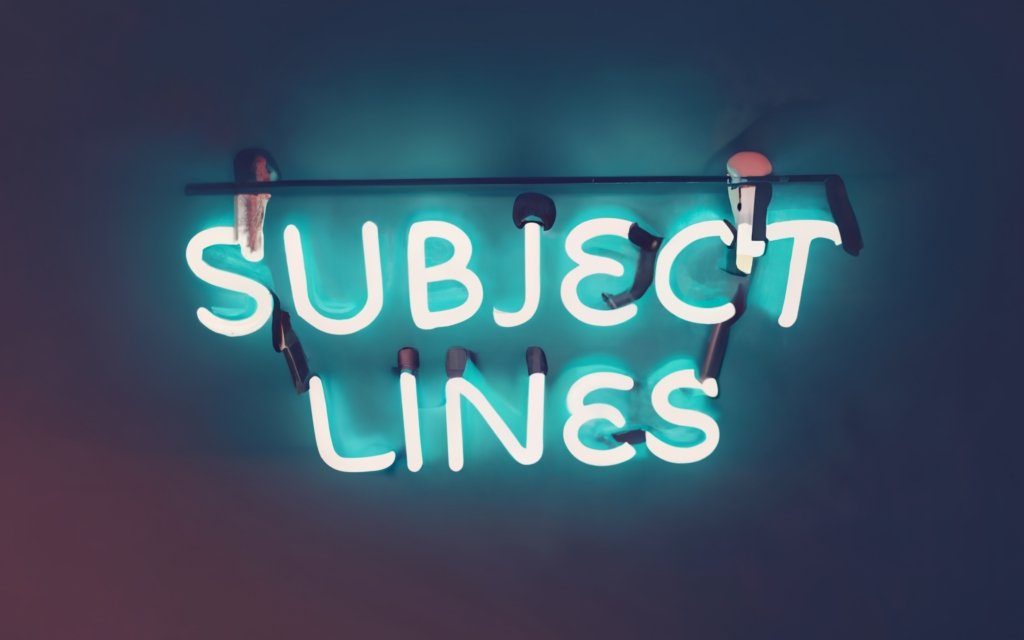
Tools to Improve Summer Email Deliverability
Summer’s crowded inboxes make it critical to optimize deliverability. Use these tools to help email reach the inbox:
Warm Up New Subject Lines Before Sending
Instead of sending a brand new subject to your full list, first seed it to a small test segment. This helps ESPs gauge engagement and spam risk before larger sends.
Try warming up each new subject line with at least 100 recipients for 1-2 weeks before rolling out more broadly. Monitor spam complaints and open rates. Subjects that underperform with the test group can be refined or replaced to prevent issues at scale.
Warmup services like Pepipost](https://www.pepipost.com/features/email-warmup/) and [Mailgun Warmup can automate and simplify the seeding process.
Analyze Email Analytics to Identify High-Performing Subjects
Review data from past summer campaigns to uncover your most effective subject lines. Identify words, offers, and styles that resonated. Then replicate what succeeds.
Analytics to examine:
- Open rates: Which subjects have the highest/lowest open rates?
- Click-through rates: Which subject lines lead to the most clicks after opening?
- Conversion rates: Which subjects drove the most desired actions like purchases?
- Unsubscribe and spam rates: Are certain subjects hurting engagement?
Isolate your seasonal star subject lines based on performance then recreate those wins. Continually refine through new A/B testing too.
Ensure Mobile Optimization for Subject Lines
Since over half of emails are opened on mobile, preview how subject lines display on phones before sending campaigns.
Some mobile optimization tips:
- Use 30-50 character subject lines to prevent truncating
- Avoid cramming long names like “JohnSmithFurnishings” which cut off
- Eliminate extra spaces and repetitive words
- Left-align lines and topics
- Make key info prominent at the start
- Use 1-2 emojis max for clarity
- Test CTAs and season keywords on mobile screens
Scannability is essential for tiny mobile screens. Verify nothing crucial gets clipped or buried on phones to maximize deliverability.
Subject Line Best Practices For Any Season
Beyond summer-specific techniques, certain universal best practices create winning subject lines year-round.
Limit Subject Length for Mobile Devices
Keep subjects under 50 characters so they don’t truncate awkwardly or get cut off on small screens. 30-40 characters is optimal.
Speak to Customer Needs and Interests
Ensure topics and keywords align with your audience’s values, preferences and concerns. Subject relevance boosts open likelihoods.
Ensure Clarity and Accuracy
Avoid ambiguous claims or hyperbole that may mislead. Keep subjects clear, concise and honest.
Use Personalization When Possible
Add first names, past purchase details, or custom segment attributes if applicable to boost opens. But stay away from over-familiarity.
Additional Tips:
- Prioritize scannability with fragmented phrases vs. lengthy sentences
- Front-load the core value proposition within first 30 characters
- Leverage the preview text to provide additional context
- Limit punctuation, symbols, gimmicks; less is more
- Avoid spam filter keywords like “free,” “sale,” “money” in excess
- Spell out months and avoid overusing abbreviations
- Test the impact of emojis, ALL CAPS, symbols, urgency
- Refresh stale phrases and go beyond expected clichés
With a sharpened subject line strategy and optimized delivery approach, your most important metric – inbox placement – will remain high even during the busy summer season. Use data, testing, and optimization tools to perfect email subjects subscribers can’t resist opening.
Ready to Boost Opens with Seasonal Subjects?
Summer sun sparks leisure vibes, making it the perfect time to craft captivating subject lines.
Let’s recap keys to refresh your subject line strategy:
Use seasonal keywords – Words like summer, August, and phrases referencing summer activities help anchor subject lines in the sunny mindset.
Leverage emotions – Tap into adventure, relaxation, and nostalgia to transport readers. Avoid generic lines lacking emotional hooks.
Personalize when possible – Details like first names and past purchases add a 1:1 feel. Segment your lists to individualize at scale.
Limit length – Keep subjects under 50 characters so they don’t truncate on mobile. Lead with the core hook in the first 30 characters.
Experiment with icons – Emojis lend seasonal cheer and help subjects stand out. But use strategically – less is more.
Feature deals and exclusivity – Spotlight savings front and center like 40% off or VIP-only access. Scarcity and urgency prompts like “24 hrs only!” also work.
Aim for clarity – Avoid vague claims that may mislead. Keep subjects honest, concise and crystal clear.
A/B test variations – Try different keywords, offers, formatting to see what resonates based on open and click rates.
Check mobile optimization – Make sure key info doesn’t get cut off on smaller screens during preview.
Review past performance – Analyze historical email data to identify winning themes, words, and timing.
Warm up new subject lines – Seed fresh subject lines to small groups first to prime deliverability before mass sends.
With creativity and a data-backed approach, your subject lines will thrive even in summer’s high email volume.
Turn Subject Line Inspiration into Execution
Ready to put these tips into action? Access our pre-built library of 55 high-converting summer email subject lines.
These professionally crafted subjects have been market-tested and optimized for clarity, mobile-friendliness, and seasonal resonance.
The templates are categorized by goal, including:
- Summer sales and promotions
- New summer collection announcements
- Fourth of July and summer holiday subject lines
- Back to school subjects
- End of summer subjects
Simply pick templates relevant to your campaigns, plug in your brand details, and create seasonal subjects with ease.
[CTA button linked to subject line template download page]
In just minutes, you can refresh stale subject lines holding back your summer campaigns. Don’t leave revenue on the table this season!
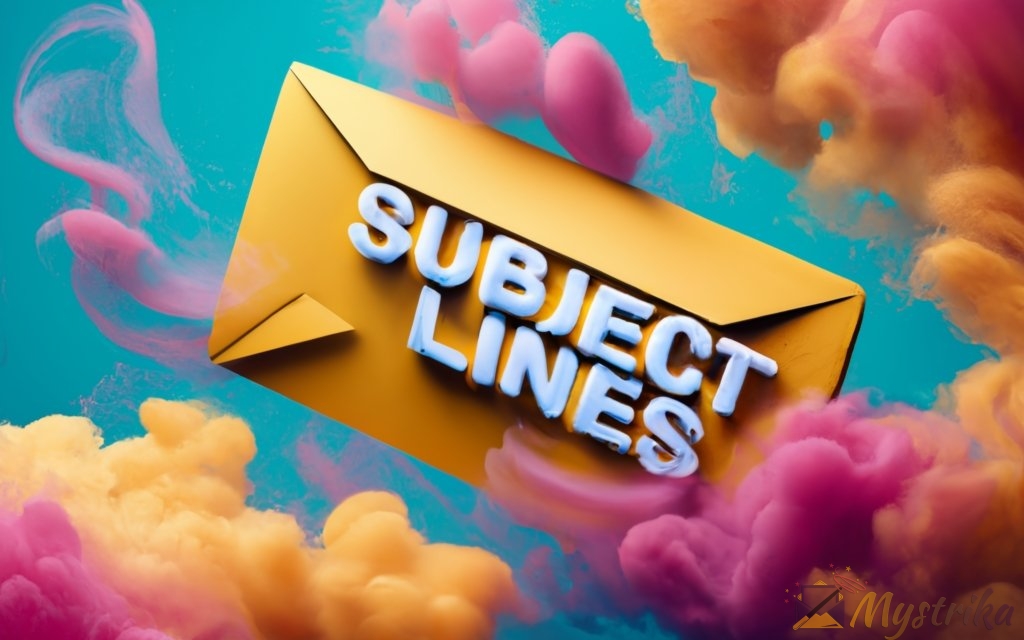
Key Takeaways
- Summer emails require catchy subject lines to grab attention amidst crowded inboxes and vacation mindsets.
- Keep subjects scannable, seasonal, and under 50 characters for mobile optimization.
- Leverage summer keywords, emotions like FOMO and nostalgia, and tie-ins to major holidays.
- Avoid spammy language, hyperbole, and excessive use of symbols that may hurt credibility.
- Personalize subject lines when possible based on name, past purchases, and customer segment.
- The beginning and end of summer are ideal times for limited-time promotions or final clearances.
- Major summer holidays like July 4th, Memorial Day, and Back to School present creative tie-in opportunities.
- Test different subject line styles and language with A/B experiments to identify what resonates most.
- Analyze past summer campaign data to inform future subject line direction and copy choices.
- New subject lines should be warmed up first before sending to full lists to maximize deliverability.
- Refresh subject lines each summer and align messaging to evolving consumer trends and interests.
- Compelling seasonal subject lines are key to cutting through noise and boosting email opens rates all summer long. Here are some frequently asked questions about summer email subject lines:
Frequently Asked Questions
What are some summer-specific keywords to include in subject lines?
Good summer keywords include: summer, sunny, August, heatwave, vacation, beach, swim, sundresses, sandals, sunscreen, sunglasses, summer break, etc. You can also reference specific summer holidays like Memorial Day, Fourth of July, and Labor Day.
When should I send summer-themed emails?
The peak summer months of June, July and August are best for seasonal subject lines. However, you can begin summer campaigns and travel promotions as early as May. End of summerClearances can run through September.
How long should summer email subject lines be?
Keep summer email subjects between 30-50 characters. Under 40 characters is ideal so the full subject line shows on mobile without truncating.
Should I use emojis in summer subject lines?
Used sparingly, 1-2 summer emojis like ☀️ 🏖 🍦 can add seasonal flair. But don’t overdo it. Test emoji placement to see if the beginning, middle or end of your subject lines perform best.
What type of promotional subject lines work for summer?
Limited-time offers like flash sales, percent-off discounts, and final clearance messaging works well for summer promotions. Countdown urgency like “3 Days Left!” also adds scarcity.
What if I’m not a seasonal business?
Even less seasonal businesses can tap into summer vibes. For example, a tax prep service could use a subject like: “Organize summer receipts before fall tax time.” Look for timely hooks relevant to your industry.
How can I optimize summer subjects for mobile?
Preview subject lines on mobile screens before sending campaigns. Left-align text, minimize repetitive words, and avoid cramming long names. Prioritize short, scannable phrasing with the core message upfront.
What’s a good length for summer email subject lines?
30-50 characters is ideal, with critical information in the first 30 characters. Subjects longer than 50 characters often get cut off on smaller mobile screens.
How can I test different summer subject line variations?
Use A/B testing. Send one version to half your list and another version to the other half. After 2+ weeks, compare open rates to see which subject resonated most. Then use the winning version going forward.

